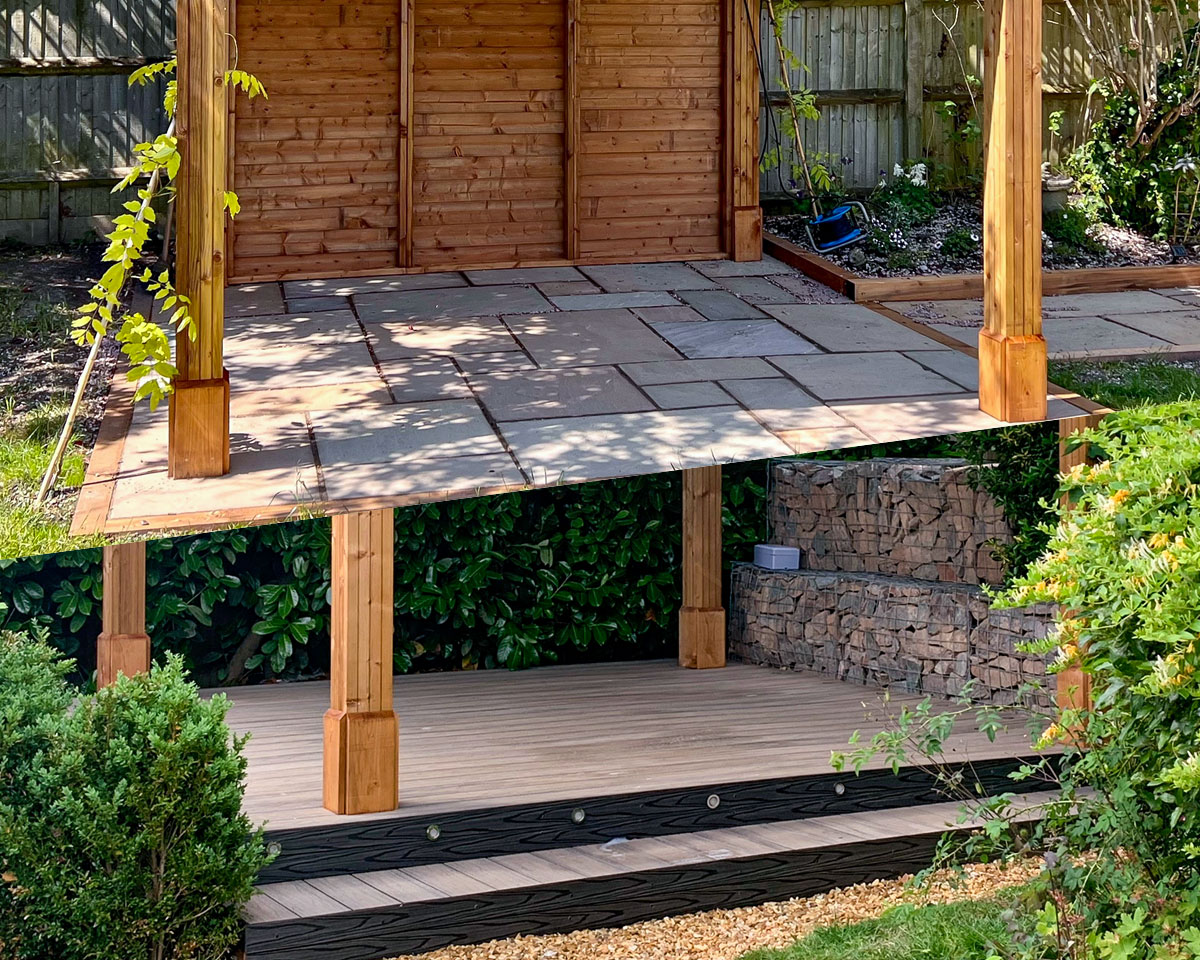Adding a Gazebo is a fantastic addition to any garden. Perfect for offering shelter and shade as you spend time outdoors. But before embarking on the build of your gazebo, you will need to make sure you have a solid base to construct it on. Getting the gazebo foundations right is important, to ensure it has a stable surface to stand on. This means you will be able to enjoy your gazebo for many years to come.

There are a number of different types of foundations you can use for your gazebo. These include concrete, paving slabs and decking. The key points to laying any base are that it must be flat, level and square. You will need to plan from the early stages the best way to provide support for your garden structure. Here are our tips for building a gazebo base and the types of foundation options available.
Preparing the Gazebo Base
Concrete is often the top choice as a base for gazebos and other garden buildings. However, if you already have a paved or decked area in your garden, this can be just as suitable a surface to build on top of. If you don’t have an existing base laid already, then you will need to prepare one before building. The area you plan to build your gazebo on needs to be level and have sufficient drainage.
The first thing to consider is the location you plan to site your gazebo. The base area needs to be clear of any debris, rocks, roots and grass. You will also need to level out the ground as much as you can, and fill in any holes. This will ensure the soil is compacted and stable enough to build on.
Start by marking out the area you want to use for your gazebo base. Then, you’ll have a clear idea of where the foundation will go. Place stakes in the corners of the proposed base area and use string as a guideline to create an outline. It is recommended that you add at least four extra feet around the perimeter of your gazebo so you have space around the footings. For example, an 8’ x 8’ square gazebo should have a base that measures at least 12’ x 12’.
Concrete Gazebo Foundations
Concrete is commonly used for laying a base due to its high durability. With the correct care, concrete will last for a long time. If you are creating a concrete base, remember to factor in the time it will take to set and dry. The area must be fully ready before your gazebo project can start.
Before laying down the concrete, you may need to dig the foundation to the required depth. It needs to be deep enough for a sufficient thickness of concrete as well as layers of compacted hardcore underneath. Doing this step will help flatten the surface. This will ensure you create a level base where there are any inclines in the ground.
The concrete should be laid over crushed rock or gravel to keep it stable, so this should be placed down into the excavated area first. Mix the concrete following the manufacturer’s instructions and then pour it over the top. The concrete will need to be carefully levelled out and smoothed over to ensure it is fit for building. You will need to wait for around seven to ten days for the area to completely dry and be ready for building your gazebo.
If you’re not too confident in laying your own concrete base, then you should be able to find a local builder who can easily do the job for you.

Patio Stone Gazebo Foundations
If the area you plan to site your gazebo on is level and has good drainage, then paving stones are an easier foundation option for you to do yourself. They are also well suited for smaller-sized gazebos. They should be readily available from a local building supplier.
The patio stones should be laid on top of compacted soil, with crushed rock or gravel added underneath if you feel it needs more stability. An even layer of stones under the paving will not only help to provide a level foundation but will also aid with drainage.
Wooden Decking Gazebo Foundations
Another suitable option to stand your gazebo on is a wooden decked base. You may prefer the look of this type of foundation as it will give your outdoor living area an attractive and natural appearance that matches the style of a wooden gazebo. To make the deck, use wooden beams to construct a sturdy frame around the gazebo’s perimeter, which will serve as the base for the decking. Wooden planks can then be laid on top of the frame to create a decked floor area for your gazebo to stand on.
The gazebo foundations need to be strong and stable, which is why pressure treated timber is the ideal material to use for your decked base. This is because it is low maintenance and durable in all weather conditions, so it will last the test of time. If you’re making your decked base, plan this into your project timeline, allowing for any staining/painting time, so everything is all prepared for when you get your gazebo and you are ready to start building.
Find out more about the benefits of pressure treatment.

Checking Your Gazebo Base
Now you have a sturdy foundation, you’re ready to start building your gazebo on top of your newly laid surface. But before starting on the construction, it’s vital that you double-check check the gazebo foundation is completely flat, level and even. This can easily be done by using a spirit level.
If the base is not completely square and level, it may cause difficulties with the build. As well as affect the structure and stability of the gazebo in the long term. If the gazebo foundations are not sufficient enough to support your gazebo, you will likely encounter issues over time.
For more information see Laying a Base for a Wooden Gazebo.
We sell a wide variety of garden structures. Including wooden Gazebos and Pergolas, in a range of sizes, all made from pressure treated timber. Our gazebo designs come with solid wooden rooves. Whereas the Erin Gazebo range comes with a unique Perspex dome on top that acts like a skylight. There are also options to add walls to your gazebo for extra privacy and protection. These range from wooden panels to louvred panels, and glazed panels.
Good gazebo foundations, whether they be concrete, patio stones or decking are crucial to the functionality of your garden shelter. Whether you choose to use your gazebo as a barbecue hut, hot tub shelter, alfresco dining area or outdoor living room, building it on a solid base will ensure you can enjoy years of use.








